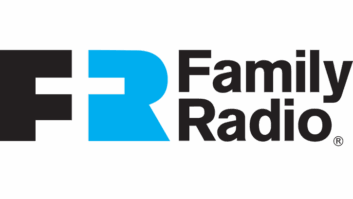Although Canada does not have an official digital radio broadcast standard, Corus is now providing HD Radio broadcasts in Calgary, Toronto and Vancouver.
An operator of 39 Canadian radio stations plus numerous broadcast TV and cable/satellite-only TV channels, the company is using HD Radio over FM to deliver simulcasts of its existing AM stations in the three markets.
The AM stations being simulcast, using experimental government licenses, are:
• Calgary’s CHQR, via CKRY(FM)’s HD2 channel;
• Toronto’s CFMJ, via CING(FM)’s channel in nearby Hamilton, while CHML(AM) is on HD3;
• Vancouver’s CKNW and CHMJ, via CFMI(FM) on HD2 and HD3, respectively.
Map shows HD Radio receiver signal locks in blue and non-locks in red. CING(FM)’s HD Radio signal blankets the “Golden Horseshoe” around Lake Ontario.
Click to Enlarge

“Our AM signals have been having an increasingly hard time penetrating the downtown areas of these three cities, due to the proliferation of taller buildings,” said John Coldwell, Corus’ director of radio technology.
“Using HD Radio via FM to simulcast into these areas, combined with the format’s superior sound, seemed a good solution to the problem, especially since HD Radio is being offered as an option in many new Canadian cars.”
A FAMILIAR RISK
Corus’s decision to experiment with HD Radio in Canada is not a risk-free venture. Broadcasters here felt burned by rolling out European-derived DAB (Digital Audio Broadcasting) coverage in major Canadian cities and, before that, AM stereo service. In both cases, according to common wisdom, the efforts died due to lack of affordable and widely consumer receivers, devouring millions of dollars in unrequited infrastructure investment.
Moving into HD Radio poses the same risk to Canada’s radio broadcasters, save that this format is actually turning up in new North American-built cars. Further, proponents say, HD Radio simulcasts can help building-impaired AM stations penetrate the downtown core. Other major Canadian private radio groups are also experimenting with HD Radio via FM for AM simulcasts. Bell Media has HD Radio stations in Ottawa and Vancouver; Rogers Radio in Toronto and Vancouver. Two small private FM broadcasters, Brynes Communications and Durham Radio, are serving their southern Ontario markets with HD Radio.
“Investing in HD Radio via FM is a gamble,” Coldwell of Corus said, “but it is one that addresses our AM reception problems effectively, adds the extra channels and on-screen program information that this format supports, and is in line with what our U.S. neighbors are doing.
“This last point matters, because we cannot imagine any form of digital radio succeeding in Canada that is not in line with what the U.S. is using.”
THE SETUP
Ideally, Corus would have been able to venture into HD Radio via FM by simply adding HD Radio upgrades to existing transmitters.
This proved to be the case in Calgary and Vancouver. In both cities, the company was able to inject HD Radio signals into existing Nautel NV-20 FM transmitter broadcasts without diminishing the power of their analog FM transmissions. (The Calgary HD Radio signal injection level is –16 dBc, in Vancouver it is –12 dBc.) The Calgary signals are emitted through a shared broadcast facility/tower owned-and-operated by the publicly-owned Canadian Broadcasting Corp. In Vancouver, Corus has its own tower and transmitter at the city’s shared Mount Seymour broadcast site.
Toronto was a different matter. Like most radio broadcasters in that city, Corus’ analog FM signals are emitted from the CN Tower through a broadcaster-owned consortium that manages a shared transmission facility there.

Dashboard display of Hamilton/Greater Toronto’s CING HD2 (AM 640).
“Unfortunately, the 40-year-old Marconi signal combiner is not capable of handling HD Radio, and since the unit is well out of date, no one is making parts to make this possible,” said Coldwell. “As a result, we had to find another way to serve HD Radio via FM into the Toronto market, and we did.”
Geography made the difference: Corus’ CING(FM) transmitter site, on the shared CHCH-TV antenna in Hamilton, Ontario, has a clear line-of-sight path into downtown Toronto and beyond directly across Lake Ontario.
“We don’t share the radio antenna that’s mounted on tower, which is already mounted on the tall Niagara Escarpment with a commanding view to Toronto, so there was no one that we had to negotiate with,” Coldwell said.
“Our antenna is at the 1,000-foot mark above ground, powered by a 20 kW Nautel NV-20 transmitter making 100 kW ERP, so the line-of-sight path to Toronto over water is exceptional. Add the fact that we don’t have a combiner to contend with, and the conditions were ideal for reaching Toronto from Hamilton, using HD Radio on FM.”

Advanced User Interface display on Nautel transmitter serving CKRY Calgary.
The result: Corus is simulcasting CFMJ(AM) via CING(FM)’s HD2 channel, from Hamilton directly into downtown Toronto.
“Since we upgraded the NV-20 to a higher-power GV-30 transmitter, we are broadcasting HD Radio using a full –10 dBc signal injection, while maintaining CING(FM)’s analog transmission at its original 20 kW,” said Coldwell.
“We’ve been told that we are actually operating the most powerful HD Radio station in North America.”
SOLID COVERAGE
Having spent the money to add HD Radio via FM, Corus was eager to measure its actual coverage.

CKRY shares space on a master FM antenna near the top of this stick.
Deducing performance was relatively easy in Calgary and Vancouver, since the company’s HD Radio signals are coming from the company’s existing FM broadcast sites. But what about downtown Toronto, and Corus’ innovative direct-from-Hamilton solution?
To find out, Corus conducted extensive in-car and stationary measurement tests throughout the Greater Toronto area. The accompanying map on page 6, which shows successful HD Radio receiver signal locks in blue and non-locks in red, tells the tale: CING(FM)’s HD Radio signal blankets the “Golden Horseshoe” around Lake Ontario. Although metropolitan Toronto’s eastern edge has some spotty coverage, downtown Toronto is solidly served by HD Radio. So is most of the city and surrounding areas.
“We frankly have achieved better results that we had projected for,” said Coldwell. “HD Radio is a solid solution for getting our AM content in downtown Toronto, interference-free via FM.”
The only thing that Corus does not know is how many people are tuning into its HD Radio signals. Nor does anyone in Canada, because this data is not being measured by Numeris, the country’s ratings collection service.
This lack of data, plus the Canadian government’s reluctance to institute a new official digital radio standard post-DAB, explains why Corus and other Canadian broadcasters are holding off on a full HD Radio rollout.
“Nevertheless, with the advent of HD Radio in new cars, I believe this technology can be a player on the Canadian digital dashboard,” said Coldwell.
“In the meantime, we are impressed with how well HD Radio via FM is solving our AM propagation problems in downtown areas.”
Comment on this or any story to[email protected].







